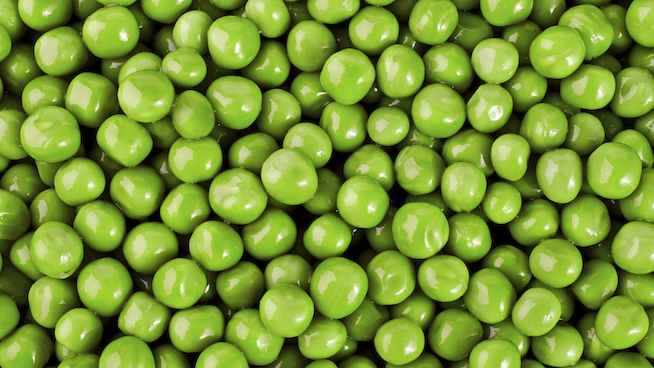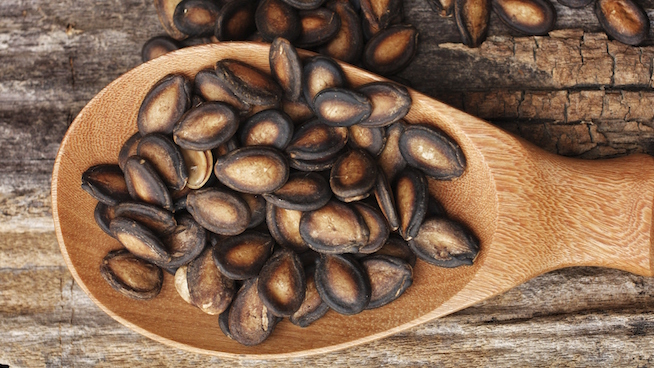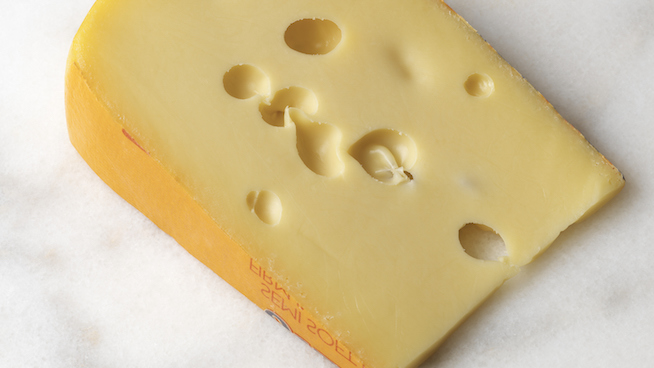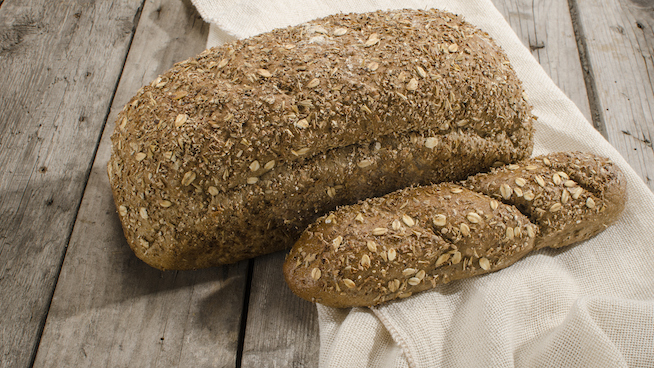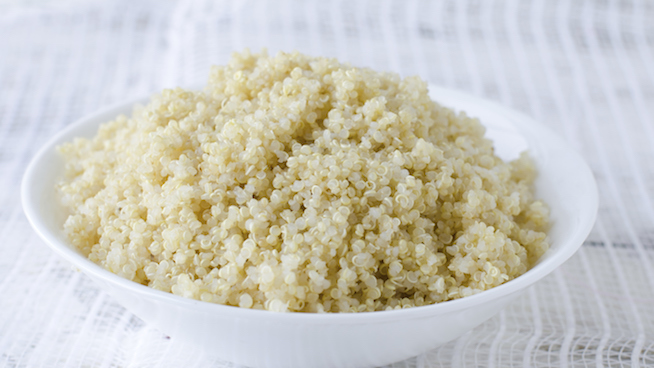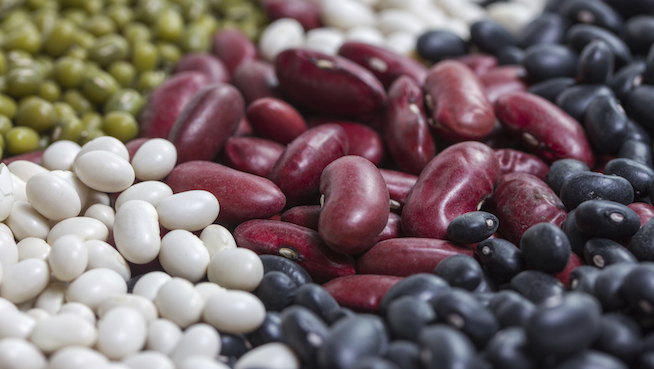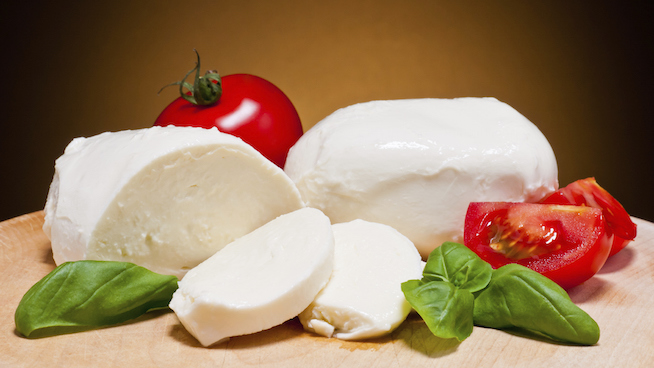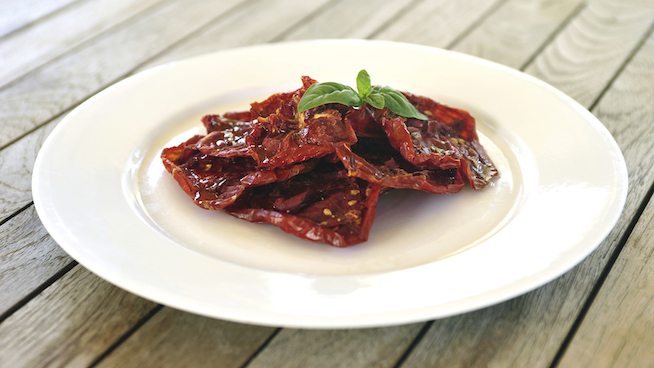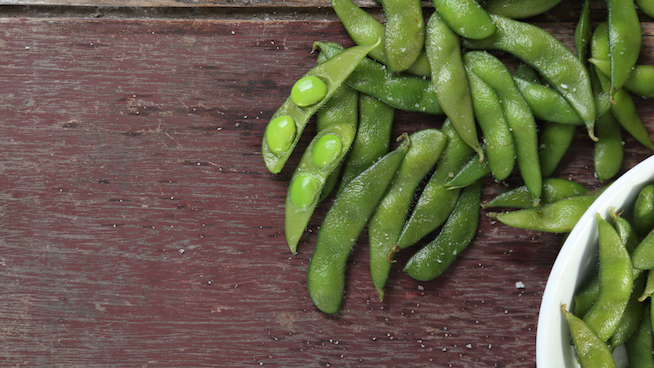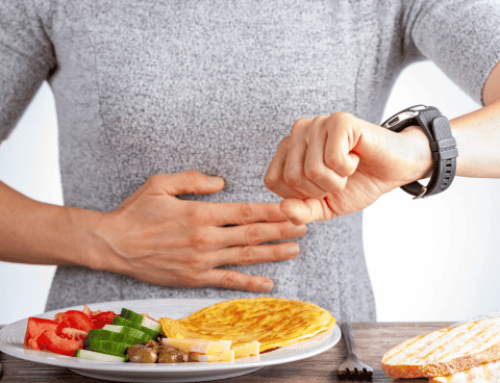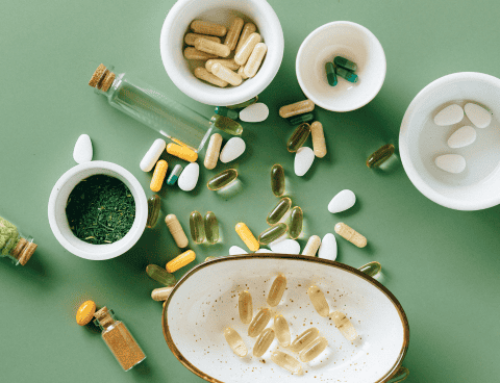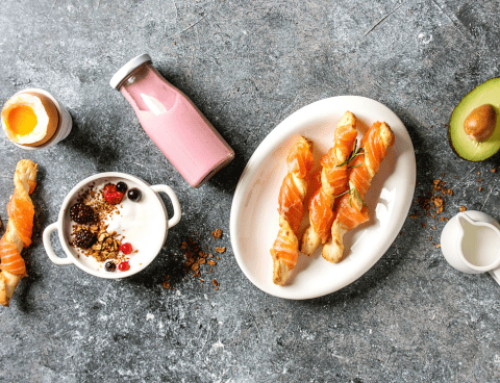9 Foods You Didn’t Know Have as Much Protein as Peanut Butter
Peanut butter is a popular food, often praised for its high protein content. A two-tablespoon serving packs eight grams of protein, making it an easy way to add protein to a variety of snacks or a meal.
But peanut butter isn’t the only food high in protein. In fact, various foods you might not expect deliver just as much—if not more—protein than peanut butter.
Green Peas
How much protein they’re packing: 8 grams per serving (one cup)
See, your parents really did know best. All those times when they forced you to eat your peas, they were pumping you full of protein. Peas are an extremely versatile veggie, and they can be added to a wide variety of dishes. A serving of peas contains eight grams of protein and 96 percent of your daily vitamin C, making them a strong all-around choice. Split-pea soup is a phenomenal source of protein if you aren’t a big fan of eating your peas plain.
RELATED: Fuel Your Performance with Peas
Watermelon Seeds
How much protein they’re packing: 11 grams per serving (one ounce)
You had no idea that you’ve been spitting out pods of protein every time you ate watermelon. Most people are completely unaware of the nutritional benefits of watermelon seeds. These tiny guys are packed with protein, iron, and magnesium, and they have a pleasant nutty flavor. But here’s the catch—you shouldn’t start popping the black, shelled seeds straight from the melon into your mouth. They need to be sprouted, shelled, and dried. You can either do this yourself, or you can purchase sprouted watermelon seeds online or from many health food grocery stores.
Swiss Cheese
How much protein it’s packing: 8 grams per serving (one ounce or one slice)
Can you imagine how much protein Swiss cheese would have if it didn’t have all those holes in it? A single slice of swiss cheese provides a surprising amount of protein and calcium, 8 grams and 22 percent of your daily value, respectively. A simple snack of Swiss cheese and a handful of nuts or whole-grain crackers is an awesome choice if you’re looking for convenient protein and energy.
RELATED: The Sports-Performance and Health Benefits of Cheese
Certain Whole Grain Breads
How much protein it’s packing: 4-5 grams per slice
You might think of bread as nothing more than a surface to hold meats, toppings or spreads, but certain whole-grain breads are packed with valuable nutrients. Ezekiel whole grain breads are great examples. One slice of Ezekiel Flax Sprouted Whole Grain Bread contains 4 grams of fiber, 8 percent of your daily value of phosphorus, and 5 grams of protein. True, a single slice of bread does not have as much protein as a serving of peanut butter—but if you whip up a sandwich on it, you’ll instantly have 10 grams of protein before you even add the filling.
Quinoa
How much protein it’s packing: 8 grams per serving (one cup)
Quinoa is a pseudocereal (meaning it’s technically not a cereal but is often used like one). Originating in and around the Andes mountains, quinoa has enjoyed a massive spike in popularity in recent years as people sought out healthier grain options. Quinoa is stuffed with nutrients like copper, fiber, magnesium, and iron, but its protein content is most impressive.
A single cup of cooked quinoa provides eight grams of an especially useful “complete protein,” meaning it contains all nine essential amino acids. This makes it especially effective for building muscle.
RELATED: Quinoa Recipes: A Super-Healthy Grain, 5 Ways
Beans
How much protein they’re packing: 15 grams per serving (one cup)
Beans might be one of the most overlooked foods in the American diet. They’re affordable, they’re simple to prepare, and they’re chock full of nutrients. In addition to protein, almost every variety of beans is high in nutrients like potassium, iron, vitamin B-6, and vitamin C. Most beans—including black beans, lima beans, navy beans, and chickpeas—provide 15 grams of protein in a single serving.
Non-Fat Mozzarella Cheese
How much protein it’s packing: 9 grams per serving (one ounce)
Like Swiss cheese, non-fat mozzarella is super-high in protein. Mozzarella cheese is typically whitish in color, and, like most other cheeses, it can be served in a wide variety of ways. It’s a popular topping on pizza and a major component in Caprese salad. Non-fat mozzarella is also packed with calcium.
Sun-Dried Tomatoes
How much protein they’re packing: 8 grams per serving (one cup)
Sun-dried tomatoes are tomatoes that lose the majority of their water content when dried in the sun. Luckily, they don’t lose many of their nutrients. A serving of sun-dried tomatoes packs over 50 percent of your daily potassium, 35 percent of your daily vitamin C, seven grams of fiber, and eight grams of protein. Sun-dried tomatoes are extremely versatile, and frequently used in soups, salads, sandwiches, and pasta dishes.
Edamame
How much protein it’s packing: 17 grams per serving (one cup)
A popular food in Japanese cuisine, edamame refers to soybeans that have been picked just before they ripen and harden. These immature soybeans are bursting with protein, containing up to 17 grams per serving. They taste great on their own, they’re a great addition to salads, and they can be ground into a delicious dip.
RECOMMENDED FOR YOU
MOST POPULAR
9 Foods You Didn’t Know Have as Much Protein as Peanut Butter
Peanut butter is a popular food, often praised for its high protein content. A two-tablespoon serving packs eight grams of protein, making it an easy way to add protein to a variety of snacks or a meal.
But peanut butter isn’t the only food high in protein. In fact, various foods you might not expect deliver just as much—if not more—protein than peanut butter.
Green Peas
How much protein they’re packing: 8 grams per serving (one cup)
See, your parents really did know best. All those times when they forced you to eat your peas, they were pumping you full of protein. Peas are an extremely versatile veggie, and they can be added to a wide variety of dishes. A serving of peas contains eight grams of protein and 96 percent of your daily vitamin C, making them a strong all-around choice. Split-pea soup is a phenomenal source of protein if you aren’t a big fan of eating your peas plain.
RELATED: Fuel Your Performance with Peas
Watermelon Seeds
How much protein they’re packing: 11 grams per serving (one ounce)
You had no idea that you’ve been spitting out pods of protein every time you ate watermelon. Most people are completely unaware of the nutritional benefits of watermelon seeds. These tiny guys are packed with protein, iron, and magnesium, and they have a pleasant nutty flavor. But here’s the catch—you shouldn’t start popping the black, shelled seeds straight from the melon into your mouth. They need to be sprouted, shelled, and dried. You can either do this yourself, or you can purchase sprouted watermelon seeds online or from many health food grocery stores.
Swiss Cheese
How much protein it’s packing: 8 grams per serving (one ounce or one slice)
Can you imagine how much protein Swiss cheese would have if it didn’t have all those holes in it? A single slice of swiss cheese provides a surprising amount of protein and calcium, 8 grams and 22 percent of your daily value, respectively. A simple snack of Swiss cheese and a handful of nuts or whole-grain crackers is an awesome choice if you’re looking for convenient protein and energy.
RELATED: The Sports-Performance and Health Benefits of Cheese
Certain Whole Grain Breads
How much protein it’s packing: 4-5 grams per slice
You might think of bread as nothing more than a surface to hold meats, toppings or spreads, but certain whole-grain breads are packed with valuable nutrients. Ezekiel whole grain breads are great examples. One slice of Ezekiel Flax Sprouted Whole Grain Bread contains 4 grams of fiber, 8 percent of your daily value of phosphorus, and 5 grams of protein. True, a single slice of bread does not have as much protein as a serving of peanut butter—but if you whip up a sandwich on it, you’ll instantly have 10 grams of protein before you even add the filling.
Quinoa
How much protein it’s packing: 8 grams per serving (one cup)
Quinoa is a pseudocereal (meaning it’s technically not a cereal but is often used like one). Originating in and around the Andes mountains, quinoa has enjoyed a massive spike in popularity in recent years as people sought out healthier grain options. Quinoa is stuffed with nutrients like copper, fiber, magnesium, and iron, but its protein content is most impressive.
A single cup of cooked quinoa provides eight grams of an especially useful “complete protein,” meaning it contains all nine essential amino acids. This makes it especially effective for building muscle.
RELATED: Quinoa Recipes: A Super-Healthy Grain, 5 Ways
Beans
How much protein they’re packing: 15 grams per serving (one cup)
Beans might be one of the most overlooked foods in the American diet. They’re affordable, they’re simple to prepare, and they’re chock full of nutrients. In addition to protein, almost every variety of beans is high in nutrients like potassium, iron, vitamin B-6, and vitamin C. Most beans—including black beans, lima beans, navy beans, and chickpeas—provide 15 grams of protein in a single serving.
Non-Fat Mozzarella Cheese
How much protein it’s packing: 9 grams per serving (one ounce)
Like Swiss cheese, non-fat mozzarella is super-high in protein. Mozzarella cheese is typically whitish in color, and, like most other cheeses, it can be served in a wide variety of ways. It’s a popular topping on pizza and a major component in Caprese salad. Non-fat mozzarella is also packed with calcium.
Sun-Dried Tomatoes
How much protein they’re packing: 8 grams per serving (one cup)
Sun-dried tomatoes are tomatoes that lose the majority of their water content when dried in the sun. Luckily, they don’t lose many of their nutrients. A serving of sun-dried tomatoes packs over 50 percent of your daily potassium, 35 percent of your daily vitamin C, seven grams of fiber, and eight grams of protein. Sun-dried tomatoes are extremely versatile, and frequently used in soups, salads, sandwiches, and pasta dishes.
Edamame
How much protein it’s packing: 17 grams per serving (one cup)
A popular food in Japanese cuisine, edamame refers to soybeans that have been picked just before they ripen and harden. These immature soybeans are bursting with protein, containing up to 17 grams per serving. They taste great on their own, they’re a great addition to salads, and they can be ground into a delicious dip.

